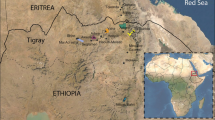Abstract
The Geographic Profiling (GP) is a data analysis tool that has great potential. Presently, it is used only minimally, and is almost always used “as it is”, independently on other analysis or data processing methods. GP was initially created as a forensic tool, to find the origin of a series of events (crimes) done by a single actor. However, using this method in integration with others, it is possible to enlarge the opportunities of geographical data analysis. The promising results of this method in integration with others, even if some of them are quite well known methods since many years–and thus well tested–show a number of further possible applications. Here we treat data clustering and partitioning with Kmeans and Dbscan methods; space partitioning (Voronoi tessellation) and a method to assign weights to the events constituting the data set. The software used in this review was written in Python, was released under GPL license and is available on Bitbucket (https://bitbucket.org/ugosnt/al_and_ugo/).
Similar content being viewed by others
References
Meyerson, L.A. and Mooney, H.A., Invasive alien species in an era of globalization, Front. Ecol. Environ., 2007, vol. 5, no. 4, pp. 199–208.
Cini, A., Anfora, G., Escudero-Colomar, L.A., Grassi, A., Santosuosso, U., Seljak, G., and Papini, A., Tracking the invasion of the alien fruit pest Drosophila suzukii in Europe, J. Pest Sci., 2014, vol. 87, no. 4, pp. 559–566.
Papini, A., Mosti, S., and Santosuosso, U., Tracking the origin of the invading Caulerpa (Caulerpales, Chlorophyta) with geographic profiling, a criminological technique for a killer alga, Biol. Invasions, 2013, vol. 15, no. 7, pp. 1613–1621.
Santosuosso, U. and Papini, A., Methods for geographic profiling of biological invasions with multiple origin sites, Int. J. Environ. Sci. Technol., 2016, vol. 13, no. 8, pp. 2037–2044.
Vitousek, P., D’Antonio, C.M., Loope, L., and Westbrooks, R., Biological invasions as global environmental change, Am. Sci., 1996, vol. 84, pp. 468–478.
Wilcover, D.S., Rothstein, D., Dubow, J., Phillips, A., and Losos, E., Quantifying threats to imperilled species in the United States, Bioscience, 1998, vol. 48, pp. 607–615.
Strayer, D.L., Eviner, V.T., Jeschke, J.M., and Pace, M.L., Understanding the long-term effects of species invasions, Trends Ecol. Evol., 2006, vol. 21, pp. 645–651.
Stevenson, M.D., Rossmo, D.K., Knell, R.J., and Le Comber, S.C., Geographic profiling as a novel spatial tool for targeting the control of invasive species, Ecography, 2012, vol. 35, pp. 1–12.
Colautti, R.I. and MacIsaac, H.J., A neutral terminology to define ‘invasive’ species, Divers. Distributions, 2004, vol. 10, no. 2, pp. 135–141.
Betekhtina, A.A., Mukhaceva, T.A., Kovalev, S.Y., Gusev, A.P., and Veselkin, D.V., Abundance and diversity of arbuscular mycorrhizal fungi in invasive Solidago canadensis and indigenous S. virgaurea, Russ. J. Ecol., 2016, vol. 47, no. 6, pp. 575–579.
Paini, D.R., Sheppard, A.W., Cook, D.C., De Barro, P.J., Worner, S.P., and Thomas, M.B., Global threat to agriculture from invasive species, Proc. Natl. Acad. Sci. U. S. A., 2016, vol. 113, no. 27, pp. 7575–7579.
Pimentel, D., Zuniga, R., and Morrison, D., Update on the environmental and economic costs associated with alien-invasive species in the United States, Ecol. Econ., 2005, vol. 52, no. 3, pp. 273–288.
Kalinkina, D.S., Sushchuk, A.A., and Matveeva, E.M., Characteristics of soil nematode communities under conditions of woody plant introduction, Russ. J. Ecol., 2016, vol. 47, no. 5, pp. 473–479.
Gallardo, B., Clavero, M., Sánchez, M.I., and Vilà, M., Global ecological impacts of invasive species in aquatic ecosystems, Global Change Biol., 2016, vol. 22, no. 1, pp. 151–163.
Rossmo DK. A methodological model. Am. J. Crimin. Just., 1993, 172, 1–21.
Rossmo, D.K., Geographic Profiling, Boca Raton, FL: CRC Press, 2000.
Papini, A. and Santosuosso, U., Snow’s case revisited: New tool in geographic profiling of epidemiology, Braz. J. Infect. Dis., 2017, vol. 21, no. 2, pp. 112–115.
Le Comber, S.C., Rossmo, D.K., Hassan, A.N., Fuller, D.O., and Beier, J.C., Geographic profiling as a novel spatial tool for targeting infectious disease control, Int. J. Health Geogr., 2011, vol. 10, p. 35.
Buscema, M., Grossi, E., Breda, M., and Jefferson, T., Outbreaks source: A new mathematical approach to identify their possible location, Physica A, 2009, vol. 388, pp. 4736–4762.
Hulme, P.E., Trade, transport and trouble: Managing invasive species pathways in an era of globalization, J. Appl. Ecol., 2009, vol. 46, no. 1, pp. 10–18.
Martin, R.A., Rossmo, D.K., and Hammerschlag, N., Hunting patterns and geographic profiling of white shark predation, J. Zool., 2009, vol. 279, pp. 111–118.
Tryon, R.C., Cluster Analysis, New York: McGraw- Hill, 1939.
Huelsenbeck, J.P. and Ronquist, F., MrBayes: Bayesian inference of phylogenetic trees, Bioinformatics, 2001, vol. 17, pp. 754–755.
Huelsenbeck, J.P., Larget, B., Miller, R.E., and Ronquist, F., Potential applications and pitfalls of Bayesian Inference of phylogeny, Syst. Biol., 2002, vol. 51, no. 5, pp. 673–688.
Jain, A.K., Data clustering: 50 years beyond K-means, Pattern Recognit. Lett., 2010, vol. 31, no. 8, pp. 651–666.
Ester, M., Kriegel, H.-P., Sander, J. and Xu, X. A density-based algorithm for discovering clusters in large spatial databases with noise, in Proc. 2nd Int. Conf. on Knowledge Discovery and Data Mining, E. Simoudis, J. Han, and U. Fayyad, Eds., AAAI Press, 1996, pp. 226–231.
Eckes, T. and Orlik, P., An error variance approach to two-mode hierarchical clustering, J. Classification, 1993, vol. 10, no. 1, pp. 51–74.
Gerig, G., Martin, J., Kikinis, R., Kübler, O., Shenton. M., and Jolesz, F.A., Automating segmentation of dual-echo MRhead data. Segmentation: specific applications, Lecture Notes Comput. Sci., 2005, vol. 511, 175–187.
Rousseeuw, P.J., Silhouettes: A graphical Aid to the interpretation and validation of cluster analysis, Comput. Appl. Math., 1987, vol. 20, pp. 53–65.
Snow, J., Snow on Cholera. A Reprint of Two Papers by John Snoe, MD, Together with a Biographical Memoir by B.W. Richardson, MD,and an Introduction by Wade Hampton Frost, New York, The Commonwealth Fund, 1936.
Canter, D., Coffey, T., Huntley, M., and Missen, C., Predicting serial killers’ home base using a decision support system, J. Quant. Criminol., 2000, vol. 16, pp. 457–478.
O’Leary, M., A new mathematical technique for geographic profiling, in Proceedings of the NIJ Conference, Washington, DC, June 17–19, 2006.
Cox, D.R., The regression analysis of binary sequences (with discussion), J. R. Stat. Soc., Ser. B (Methodol.), 1958, vol. 20, no. 2, pp. 215–242.
Vanwalleghem, T., Van Den Eeckhaut, M., Poesen, J., Govers, G., and Deckers, J., Spatial analysis of factors controlling the presence of closed depressions and gullies under forest: Application of rare event logistic regression, Geomorphology, 2008, vol. 95, pp. 504–517.
King, G. and Zeng, L., Logistic regression in rare events data, Polit. Anal., 2001, vol. 9, no. 2, pp. 137–163.
Edwards, T.C., Jr., Cutler, D.R., Zimmermann, N.E., Geiser, L., and Alegria, J., Model-based stratifications for enhancing the detection of rare ecological events, Ecology, 2005, vol. 86, no. 5, pp. 1081–1090.
Ellison, A.M. and Agrawal, A.A., The statistics of rarity, Ecology, 2005, vol. 86, no. 5, pp. 1079–1080.
Dixon, P.M., Ellison, A.M., and Gotelli, N.J., Improving the precision of estimates of the frequency of rare events, Ecology, 2005, vol. 86, no. 5, pp. 1114–1123.
Wie, S.G., Li, L., Chen, Z.C., Lian, J.Y., Lin, G.J., Huang, Z.L., and Yin, Z.Y., Which models are appropriate for six subtropical forests: Species-area and species-abundance models, PLoS One, 2014, 9, no. 4, e95890. doi 10.1371/journal.pone.0095890
Hüllermeier, E., Fuzzy methods in machine learning and data mining: Status and prospects, Fuzzy Sets Syst., 2005, vol. 156, no. 3, pp. 387–406.
Aurenhammer, F., Voronoi diagrams: A Survey of a fundamental geometric data structure, ACM Comput. Surveys, 1991, vol. 23, no. 3, pp. 345–405.
Author information
Authors and Affiliations
Corresponding author
Additional information
The article is published in the original.
Rights and permissions
About this article
Cite this article
Santosuosso, U., Papini, A. Geo-Profiling: beyond the Current Limits. A Preliminary Study of Mathematical Methods to Improve the Monitoring of Invasive Species. Russ J Ecol 49, 362–370 (2018). https://doi.org/10.1134/S1067413618040112
Received:
Published:
Issue Date:
DOI: https://doi.org/10.1134/S1067413618040112




